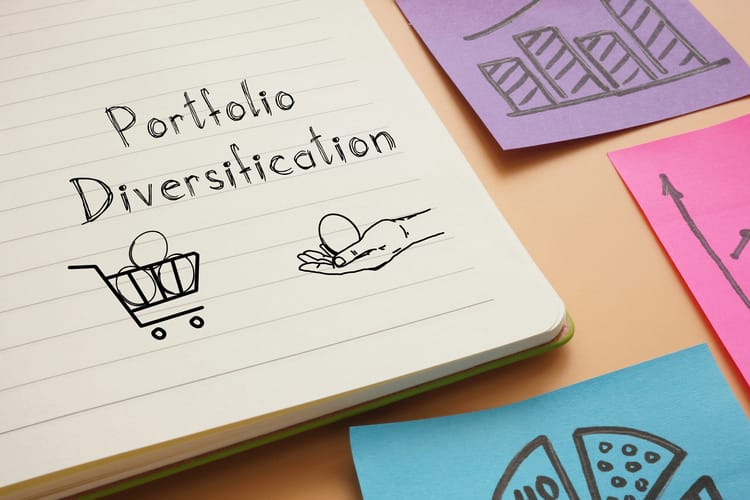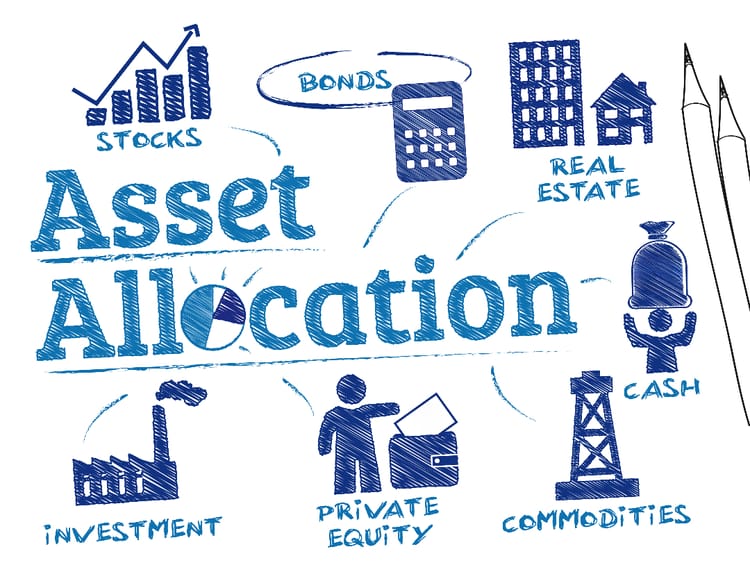Various factors may lead your portfolio to underperform in the overall market. Analysing the investors’ diminished returns, studies have found complex reasons, some that are well beyond investors’ control while others stemmed from investor’s own decision-making.
There is no secret recipe for successful portfolio performance. To yield generous returns, one must adequately research their assets before investing in them and not succumb to distressful market situations. Unfortunately, that is a common occurrence among investors. A 2015 study on investor returns conducted by DALBAR[1] found that the leading causes of diminished returns stem from investors’ own behaviour. These behaviour consists:
- Insufficient capital prevents them from investing more or forces them to withdraw from their investment
- Investment-related expenses, such as fees
- Psychological factors that lead to voluntary behaviour leading to poor performance (e.g. panic selling)
- Insufficient time is given for the investment to grow.
The reasons behind diminished return are consistent with research. We will focus on each of them and evaluate the steps that need to be taken to mitigate them.
What is a good portfolio performance?
When it comes to portfolio performance, investors should have a broad concept of their expected return on investment (ROI) before making any purchases. ROI is a profitability ratio that quantifies the amount of return on an investment in comparison to its costs. ROI is represented as a percentage and can be used to evaluate individual investments or competing investment possibilities. When it comes to determining a "good" ROI, there are a number of elements to consider:
- your financial situation and your objectives
- the asset you are investing in, since different assets have different historical rates of return
Investors will demand a bigger return on investment if the investment is more risky.
How do I know if my portfolio is good enough?
Your ROI must first be calculated in order for you to know whether your portfolio is enough. ROI is calculated by subtracting the investment's initial value from the investment's final value and dividing the final value by the investment's initial value. Finally, the results are provided in the form of a percentage or ratio.
ROI = (Ending value of investment – Initial value of investment) / Initial value of investment
You can also supplement the calculation with historical returns. Although past performance does not indicate future returns, the historical number does give investors a general idea. The following lists the historical ROI of some of the basic assets:
- Bonds: The average yearly return on bonds from 1926 to 2021 was 6.3%[2]
- Stocks: the average historical returns of stocks from 1926 to 2021 was 12.3%
- Real estate: According to one study, the annual return on home equity was discovered to be 8.6% to 10%[3]
Reasons why your portfolio may underperform
Here, we will look at 5 reasons why your investment portfolio could be underperforming and what you can do to avoid it:
- Insufficient capital
- High cost of investment
- Unrealistic expectations
- Investor psychological factors
- Insufficient time for the investment to grow
Insufficient capital
Typically, when there is a lack of funds to invest, it usually leads to the need for cash for other personal purposes. It takes money to make money; however, most people are barred from growing their financial portfolios due to capital shortage. Additionally, when you need money for personal emergencies, preventing your portfolios from underperforming will be the last on your priority list. It does not have to underperform - you can still invest with little capital while taking care of your personal reasons. The idea is not new, and it needs little changes here and there. But it does need consistency and discipline to make a significant impact on your performance.
Here are some strategies you can implement with your cash to access investment and cater to your needs:
- Settle existing debts: It is difficult to invest any money if you have debt. It is a big obstacle for many people. Even if you invest, the earned profit will not be sufficient to pay the debt off. Therefore, your priority should be to be free of debts before investing. However, this does not apply to all sorts of debts. Debts that should be cleared first are ones with high-interest rates, such as credit cards. Other debts, such as low-interest debts and good debts (e.g. mortgage), are less daunting and do not pile up as quickly as credit card debts. In fact, these debts are necessary to build your credit scores in some countries. As these debts are generally of low interest, it is easier to pay them off while building a portfolio.
- Create an emergency fund: Advice as old as time and still holds relevance to this day. This is the fund you will stash away for emergencies. Its purpose is to give you security for situations such as illness, unemployment, accidents and necessary purchases. Generally, it would be best if you had at least six months expenses, and it must be accessible at all times. You can start saving for an emergency fund from your salary and slowly build it up. You can put it in a regular savings account or a term deposit, depending on how likely will you need to access it.
- Finance your pension plan: Investing in pension plans is an excellent strategy to save and invest for retirement and at the same time. Apart from state and employment pension, you can put a little of your savings into a voluntary pension to grow your money. Pensions can also be diversified between securities like stocks, bonds, mutual funds and other asset classes available globally. You will also get a basic exemption from tax up to a certain amount per year, which you should max out to get the most out of it. However, you must remember that early withdrawals will negate all the tax benefits, so you must stick to it to create value.
- Try out alternative investment platforms: Many innovative digital investment services have been established to cater to a larger audience with little capital. These investment services explore larger asset markets and invest in a range of vehicles - real estate, consumer and business lending, cryptocurrency, crowdfunding and many others. Most of them require little capital to start investing, Quanloop being one of them (requires only 1 Euro to start investing) and are free to sign-up and use. They also usually have additional benefits, such as a secondary market to sell, referral income and bonuses.
High cost of investment
All investments not only carry risks but also carry costs. Unfortunately, many seem to ignore it as the amount appear too small in percentage.
Here are some of the examples of finance-related expenses you should get acquainted with.
- Expense ratio: The expense ratio is a percentage based annual charge that you are paying to an investment advisor or manager to manage your fund. You could pay it to an active fund manager or to the platform itself, and it is billed on your annual return. For example, if your investment yields 10% and your expense ratio is 1%, you will actually earn 9% on return. What you really need to search is that the expense ratio remains low; otherwise, it will compound and eat a significant portion out of your profits. A 2017 study done by the ESMA website over three years found that fees and one-off charges diminished returns by 29%. In Belgium, the diminishing returns amounted to up to 31% before inflation. Of course, the high fees mostly apply to actively managed funds (e.g. mutual funds). Passive investments require far less in fees and are more stable with returns. Regardless, a good ratio for fees should not exceed 0.2% per year.
- Fees related to your investment advisor: Fees are mostly charged on the investment account itself and not the funds or the profits. Such fees include the yearly account fee, custodian fees, purchase and redemption fees and commissions if any. All or some may apply to your investment account. The problem is not the fee itself but the impact it can have if you are not observing. For example, if you invest 80,000 EUR in an S&P 500 index for a long term of 25 years, and your annual fee is only 0.5%, your growth will be up to 380,000 EUR on average. Now, add an annual fee of 2% to your index, and you will see your returns diminished to 260,000 EUR with you paying 120,000 EUR in fees. Since these fees appear really low, anyone might dismiss them. However, they will compound too and rise exponentially over time. Like expense ratio, your fees should be no more than 0.5% annually.
- Taxes on investment: You need to be aware of taxes because you need to pay them before taking the profits. The suggestion is here not to look for lower rates because your taxes depend on your residency. Rather be observant of it and make your investment decisions around it.
There are two types of taxes you should watch out for regarding your investment - income taxes and capital gains taxes:
- Income taxes: Income taxes apply to the interests you have earned from your investments. Depending on the country, it can range from 15% to 55%. Estonia’s rate is 20%[4] on interests of investments. Depending on the country, you may get the net interest with the investment platform paying it on your behalf, or you may receive the gross interest, and you have to declare it on your own.
- Capital gains: Capital gains taxes are charged on the profit when you sell your investment assets. Some of the highest rates on capital gains are in Denmark at 42%, Finland and Ireland at 34% and 33%[5]. Estonia charges the same 20% on capital gains. The lowest margin of capital gains tax is in Czech Republic, Greece, and Hungary[5] at 15%. Here, you need to understand your state laws on taxation because not all countries in Europe tax capital gains, such as Belgium, Luxembourg, Slovakia, Slovenia, Switzerland, and Turkey. Having that knowledge helps you to understand whether you want to sell your investments at all and, if so, what time is most comfortable for your finances. However, to avoid any legal repercussions, it is best to get an advisor.
Unrealistic expectations
According to Schroders Global Investor Study[6], investors throughout the world have been found to have high expectations. Despite the fact that many countries' interest rates are at historic lows, the average amount of desired income for investors worldwide was still 9.1%. The expectations of millennials were higher, with a minimum desired annual income of 10.2%, compared to the 8.4% expected by investors aged 36 and above. Professional investors[7] are more likely to be optimistic about their ROI, especially when their investments recover after flunking.
Obviously, it's important to figure out how much an investment will bring back, but this depends on a lot of things, like how much risk you're willing to take and how the economy is doing. It's a process that needs to take into account a lot of things, such as:
- Your investment time-horizon: Your time horizon, whether it's short or long term, will determine how much time you can expect to hold your investment to get returns on it. A fixed period will give you the space to prepare your budget and your financial goals. You may not meet the expectations of your return, but you will surely not be taken by surprise should your investments fall.
- Your risk tolerance: Your risk tolerance[8] is tied to your time horizon. Depending on how quickly you need the money, your risk tolerance will be affected. Both long-term and short term tactics need to be incorporated into your financial plan.
- The assets you have invested in: Lastly, your investment assets will determine a significant portion of your expectations. Some assets are riskier than others, and if you want to keep your expectations realistic, you'll need to look at both the asset's risk characteristics[9] and how it has done in the past. After your evaluation, you can proceed to diversify your portfolio.
Investor psychological factors
Voluntary investor behaviour is the leading cause of portfolio underperformance. It stems from psychological triggers that make investors act irrationally. Some of them may sound familiar, for example, panic selling, buying high, poor allocation strategy and many more. The irrational behaviour is rooted in the lack of confidence in the market, which leads to your portfolio underperforming in the markets.
Five reasons lead investors to poor decision making:
- Aversion to losses: Expecting high returns with low risk
- Herd-mind: Copying others even when the circumstances are not in their favour
- Naive diversification: Simply buying all of everything without understanding their risk and volatility characteristics
- Anchoring: Trying to find a pattern, even when there is none
- Media response: Making decisions based on anything the media says
Of course, the list is not exhaustive but more prominent than the others. In such situations, bringing your confidence back to the market should be the priority. The 2015 study by the DALBAR[10] website suggested four practices to reduce irrational behaviour that you could consider in your decision making:
- Set your expectations below the financial markets: It does not mean you should expect to lose anything. Rather, set reasonable expectations on returns and not be swayed by past performances or the media coverage.
- Control your risk exposure: You should not blindly diversify your portfolio by buying a piece of all assets. Instead, understand each asset’s risk and volatility before asset allocation to balance it out so that your portfolio is protected during the market crash.
- Evaluate your risk tolerance: Market circumstances always change, so should your risk tolerance. Evaluate your risk tolerance periodically. Balance your goal to preserve holdings against wealth growth.
- Research your assets: Always look for credible information behind an asset before investing in it. Even though the market cannot be timed or predicted, it does not mean that there are no credible sources out there. Take them with a grain of salt and understand them because it will help you make a rational choice.
Insufficient time for the investment to grow
Investments and wealth can be predicted by one's impatience, and successful market investing requires otherwise. However, many investors simply do not give their investments sufficient time to grow because they consistently choose short-term profits over long-term rewards.
Studies have found some surprising results as to investors' patience. Studies have found that investors from Nordic and German speaking countries are the most patient ones, whereas investors from the African continent are the most impatient. This impatience is attributed to culture, the economy, and how the investment was framed[11] for them.
Regardless of the reasons for impatience, it does impact the market performance overall. It turns out, the market is more stable when investors (of fundamental funds like stocks) are more patient and there is little room for volatility. The Dalbar studies also explored the relationship between investors' impatience and their investment performance. The study found that while the S&P 500 had an average annual return of 10%, impatient investors only managed to gain 7.8% on average for the same period.
There are ways to overcome impatience through various financial tools, such as the Rule of 72[12] formula. It is a grade level financial calculation that investors can use to estimate how many years it will take to double the investment. It is calculated by dividing 72 (or any other rule number) by your interest percentage.
Number of periods required to double an investment's value = 72/interest rate per period, as a percentage
You can also rely on personal discipline and planning to overcome impatience, such as preparing your investments according to your financial goals and accepting and assuming market volatility.
What you should do if your portfolio underperforms markets
Inaction is the best course of action in the event of portfolio underperformance. If the dip is short-term, overreacting to it would be more harmful to your investment than not. Of course, it does not mean that you should not do anything about it.
Short-term returns should not be used as a benchmark because your assets may be geographically varied and not all markets grow and fall at the same time. Long-term and short-term data should be used jointly by investors. Investors need to keep an eye on their positions and see if their tactics are working as planned. Waiting through the storm may be all you need to do.
How do you improve portfolio performance?
Improving portfolio performance depends on various factors, such as financial goals and the existing investments. General suggestions include portfolio diversification, asset allocation, reducing investment costs, and readjusting your portfolio[13] every set period or so to keep up with the changes. Studies have shown that portfolio performance is a lot better when you incorporate multiple building blocks alongside the general recommendations. Among them are the following:
- Hedging against currency risk through currency overlay[14]
- Taking advantage of the short-term mispricings of global assets
- Including both active and passive investments
- Identifying barriers and flexibilities in the investment guidelines
However, let's look at some research that looked at improving portfolio performance through some active steps.
- Studies have shown[15] that incorporating options into your portfolio improves stock performance, even when there are trading costs. Options[16] are derivative contracts[17] that allow the holder to trade a stock at a selected price in the future in exchange for a premium[18]. If the market price of the option falls, the option-holder may choose not to trade it. If the market prices are good, then the option holder can choose to buy the options.
- Studies show[19] that accounting for the "price momentum"[20] in your investments will improve performance. Price momentum is the time-rate at which the price of a stock changes. This can be done by using the "Composite Value Measure"[21] of selected assets in your portfolio to measure them. A composite measure is a metric that combines various assets to produce a single index.
Summary
An underperforming portfolio is not a bad thing by itself. The market adjusts and readjusts its prices all the time. It is the duration of the underperformance that may be relevant and the reason that is causing the dip. Most of the causes of underperformance are beyond the investors' control, such as having little funds to invest in the first place. But, beyond these situations, there are genuine behaviours by investors that contribute to their portfolio's underperformance, such as not giving it enough time and having unrealistic expectations. There are steps to prevent or minimise such a situation. Common knowledge dictates that you diversify your portfolio properly and rebalance your portfolio once in a while. More dynamic suggestions dictate incorporating various strategies to expand the profit scope of your portfolio, such as using options or trading using certain financial calculations and measurements.
By now, we are aware that trying to time the overall market, looking for patterns, and not settling financial priorities harms you in the long term. The key purpose of discussing the behavioural roots behind portfolio underperformance is to help you understand wealth management and make good decisions. If you are still unsure of how to approach financial management, do not hesitate to consult an advisor. Implementing the suggestions may help you avoid portfolio underperformance in the long run.
Frequently Asked Questions
What are the main reasons an investment portfolio underperforms?
The most common causes of portfolio underperformance include insufficient capital, high investment fees, unrealistic return expectations, emotional decision-making (such as panic selling), and not allowing enough time for investments to grow. Many of these issues are linked to investor behaviour rather than market conditions.
How can I prevent my portfolio from underperforming?
You can reduce the risk of underperformance by diversifying across asset classes, keeping investment costs low, setting realistic expectations, and committing to a long-term strategy. Regular rebalancing and evaluating your risk tolerance also help maintain steady growth over time.
What should I do if my portfolio is underperforming compared to the market?
Short-term dips are normal and do not always require action. The best approach is often to stay invested, review your strategy, and focus on long-term goals. If underperformance persists, consider reducing fees, adjusting your asset allocation, or seeking advice from a financial advisor to align your portfolio with market opportunities.
List of References
- Source: keatsconnelly.com
- Source: investor.vanguard.com
- Source: cnbc.com
- Source: emta.ee
- Source: taxfoundation.org
- Source: prod.schroders.com
- Source: researchgate.net
- Source: corporatefinanceinstitute.com
- Source: investopedia.com
- Source: keatsconnelly.com
- Source: toptal.com
- Source: investopedia.com
- Source: climateimpact.edhec.edu
- Source: investopedia.com
- Source: researchgate.net
- Source: investopedia.com
- Source: investopedia.com
- Source: investopedia.com
- Source: researchgate.net
- Source: investopedia.com
- Source: investopedia.com






